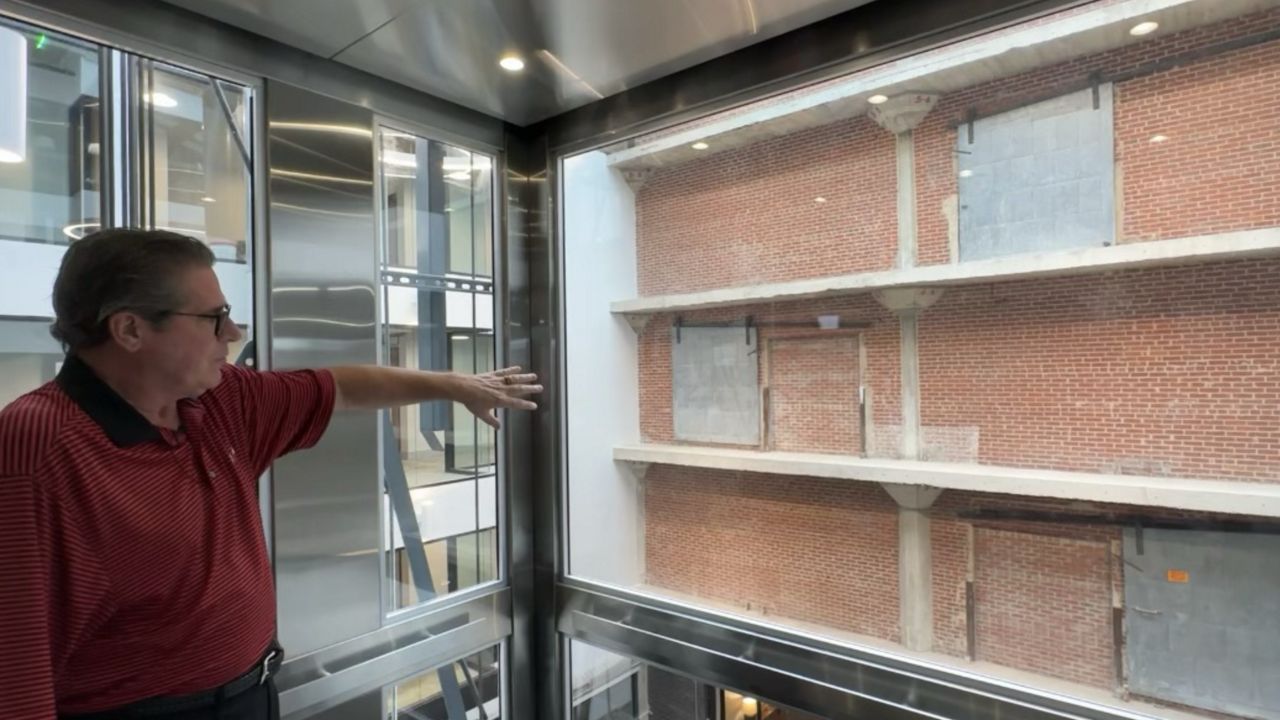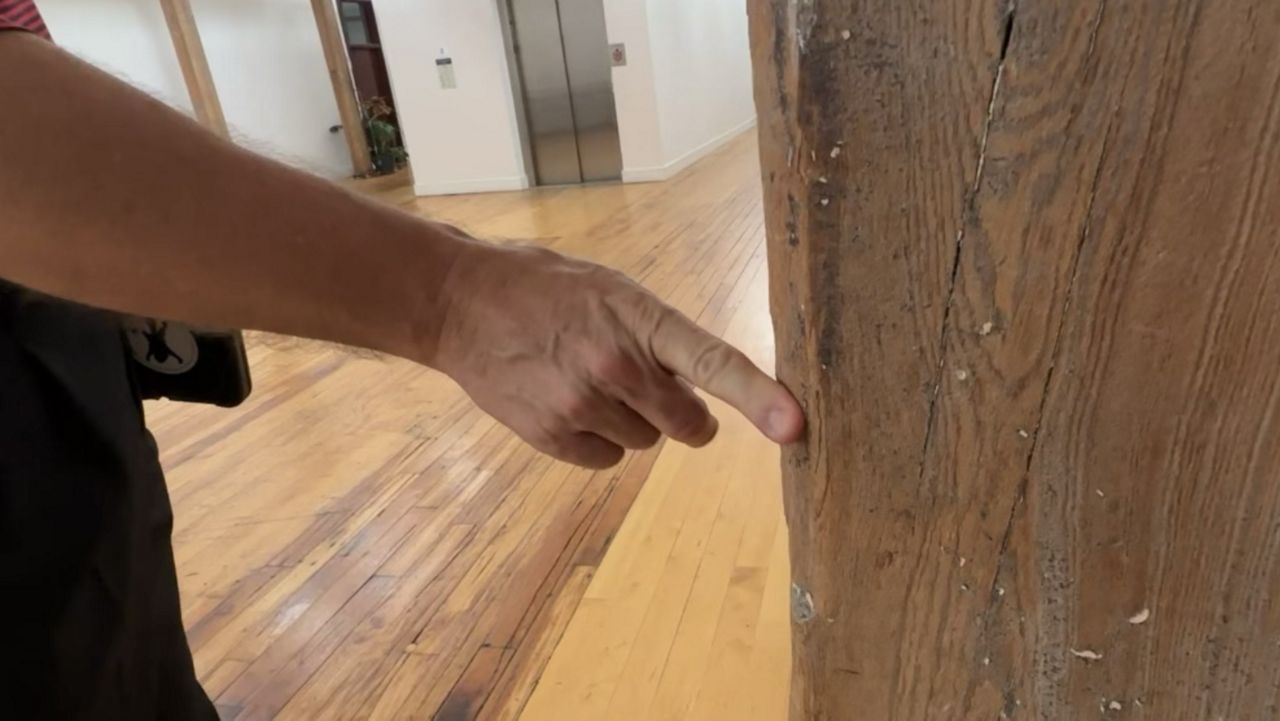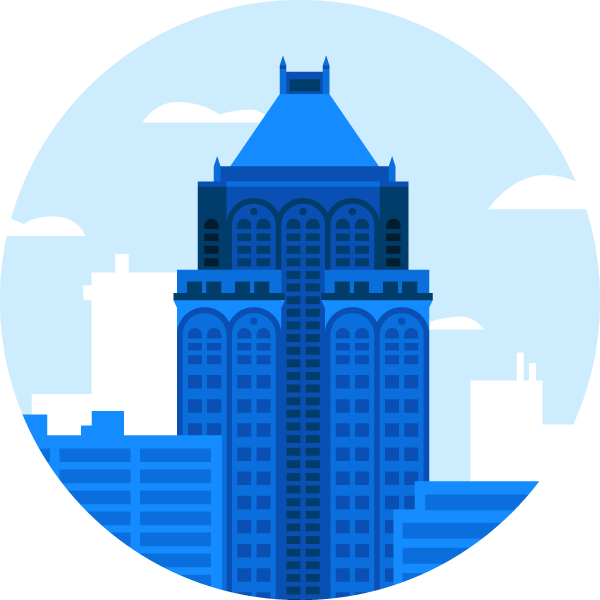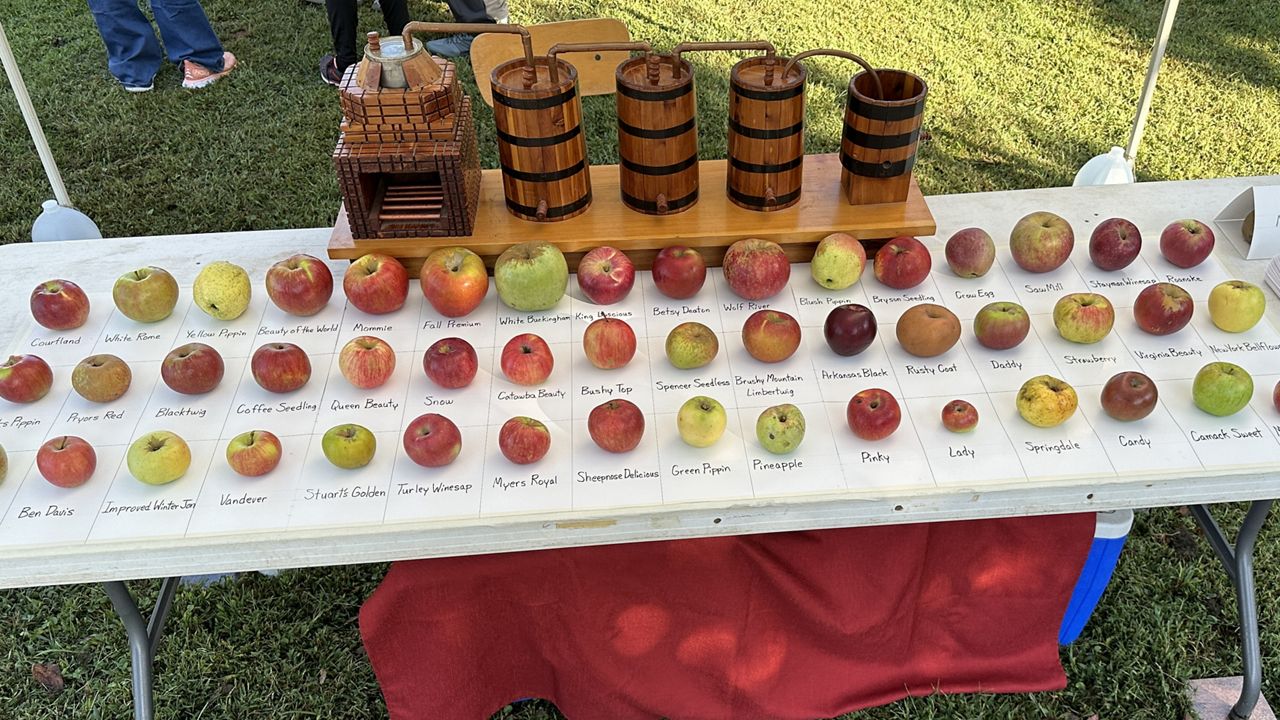GREENSBORO, N.C. — Revolution Mill has experienced many working and living communities inside its walls for over 100 years.
The Revolution Mill was one of the mills owned by the infamous Cone brothers, Moses and Ceasar Cone. The duo were one of the textiles giants in the south, specifically North Carolina.
Revolution opened its doors in the late 1890s as the largest flannel mill of the south with at one point 1,000 mills running for 16 hours a day, according to the Revolution Mill website.
Looms continued to run, making flannels and items for soldiers at the mill until its closure in 1982, when it became vacant for a few years.
The mill passed hands and began transforming into office and event spaces until it was purchased by private company Self-Help in 2012. Self-Help began a $100,000,000 renovation on Revolution Mill, according to the mill’s website.
Nick Piornack has a passion for preservation after working on restoration projects in downtown Greensboro. He began working on his largest project yet, Revolution Mill.
“What I love is when people come visit, and I do tours quite a bit to show folks what's happened that have either been here before or had been here years ago and saw it as an old warehouse of the factory," said Piornack, the general manager and owner rep for Revolution Mill.
Revolution Mill has passed in its thumping of machinery for the hustle and bustle of restaurants, breweries, event spaces, art galleries, business headquarters, store fronts and apartments.
“Their eyes and their excitement. And they can't believe that, you know, we have 142 companies and 183 apartments and restaurants and all these things here that, you know, their memory is at the old and loud and manufacturing, and now it's all reborn again,” Piornack said.
All of the newly built rooms inside of the mill used to be part of the working floor, full of machines and workers.
“It’s completely restored of all the original floors are still in place, the the maple floors,” beamed Piornack. With original brick and some authentic window panes still standing inside the mill.

Along with original fire doors, fans to remove lint off of so called “lint heads” within the factory and the original beam structures where the looms would cut into the pillars used in the aesthetic design of the mill are revealing its history to new visitors.
"So all of these columns here have chips or where spots on them. Traditionally, the machinery was sitting right alongside of them. So hundreds and hundreds, maybe thousands of machines in here were all pressing and vibrating and rubbing against this wood,” Piornack said.
This is not the first time the mill has been a living and working community with Revolution Mill and the surrounding workers of the other Cone Brother mills living in the surrounding mill village.
“There's small 700-, 800-square-foot homes on large land, but the community itself was all blended into one piece. So all four mills went to the church until the school competed in bowling and softball,” Piornack said.
A museum in partnership with UNC-Greensboro is open to the public inside the mill, displaying artifacts of those who lived there.
“I know in this mill particularly, there was 4,000 people working on three different shifts, so about 1,300 people per shift each day,” Piornack said.
Revolution Mill is sticking to its threads, housing large clothing companies including Wrangler, Lee, Carhartt and Adidas.

The mill sits on 45 acres, and management is continuing to look for options to expand, considering adding hotels, as well as new office and retail spaces.
"We're sitting two miles from downtown, a mile from the medical center, and, you know, just kind of in northeast Greensboro. If an area that has not been invested in significantly, this is kind of what our company does," Piornack stated.
He believes the trend of renovation mills and factories will continue and urges those with these abandoned or unused properties to take advantage of them.
"Small rural towns that are looking for a jump-start in their downtowns, and they have some old warehouses and factories. A lot of times this is a good way to kick it off and to get some energy in those towns," Piornack said.
So we can continue to weave together the history of past and present.








